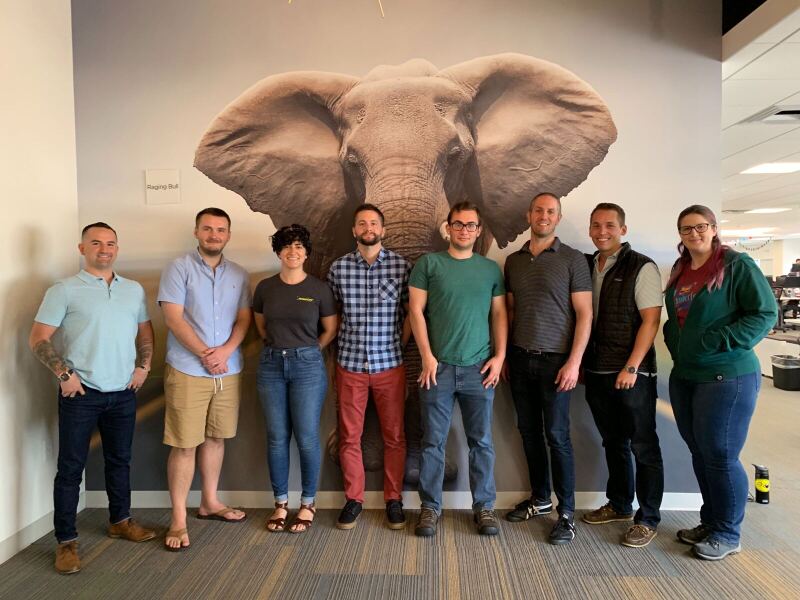When you walk into a company like Wayfair, it can feel overwhelming. There are more than 2,300 engineers across the organization. Every person you talk to seems smarter than the last.
Staff engineers are responsible for famous open source libraries and massive technical achievements. It can definitely be a scary prospect contributing code day one.
So what happens when someone walks in the doors and realizes on day one they may not know enough to do their job?
We created
Awesome Learning to address this. We believe Awesome Learning shows engineers, both outside and inside Wayfair, that we are committed to supporting and teaching you the skills you need to be a successful software engineer.
In The Beginning
Almost two years ago, a small group of engineers saw the company moving towards a JavaScript-heavy future. They were all frontend developers by trade. HTML, CSS and some presentational JavaScript. The company needed them to write React and make choices about data shapes in Redux.
But they didn’t know how.
One of these engineers was particularly worried. What if they all went off and learned by themselves and they were the only one who didn’t “get it”?
He had an idea – maybe if they all tried learning these new topics together it would keep them all on the same track. They could expose their knowledge gaps to each other and help to fill them. He sent out an email to his group asking for an hour of their time a week to learn Redux. To his surprise – each one of them accepted right away.
This group of engineers got into a room together for an hour a week and watched videos on Redux. When they finished that, they moved on to frontend testing. As time went on they added more structure. They wrote notes about what they learned and wrote simple exercises to demonstrate the key concepts.
Soon they were sending out pre-read materials before sessions to supercharge their exercise sessions. They built a culture of collaborative learning over months of sessions.
They kept iterating. That small team began codifying what worked and what didn't. They tracked learning and wrote down their process. Each one of them felt more confident in their jobs. Things were excellent...for a while.
More months passed and the team started to lose focus. They ran out of videos to watch. Creating exercises was hard. Like many early stage initiatives, it looked like it might run out of gas. The group then planned their supposed last session...
A New Challenger Approaches
During this time, there was a growing need for JavaScript education at Wayfair. The company was moving further into JavaScript, and hundreds of PHP-focused engineers needed to switch gears.
In response, Wayfair tasked a small team of platform engineers with skilling up the company in JavaScript. They had a mandate, and were also responsible for setting a clear path forward.
One of the above-mentioned platform engineers heard about the group that had been meeting to learn together. He had no idea the initiative was on its last legs. He showed up to their final session to see what they had been working on, and he liked what he saw:
- Pre-session learning materials which built a foundation in key concepts.
- Coordinated learning in a small group, not a lecture format or solo, making people more likely to contribute.
- Hands-on exercises teaching practical skills.
- Group programming encouraging technical communication.
He offered them a sort of deal. The Platform team would inject new life and resources, and the learning group would help scale the system to more teams, teaching JavaScript to the entire company.
They called themselves Awesome Learning.
The Long and Winding Road
From that day forward, the project was a labor of love. The Awesome Learning team would gather once a week to coordinate their work on the system, exercises, and platform. Each of these engineers had their day job to do, but they were passionate enough about education to give up their time (since this time, our Storefront engineers have been given dedicated education time every week).
Over the next few months they built out a simple website with four courses, each containing many lessons. They evangelized the courses to teams. More than 100 teams across Wayfair had run a session within six months of the launch.
The Awesome Learning group gathered hundreds of points of qualitative feedback. Using that, they iterated both on the content itself, and how they presented it.
More than a year after launching their internal site, they converted from MKDocs to Gatsby.js and open-sourced the platform. The effort to convert platforms, iterate on content, and release everything as open source was no small task. It took our group hundreds of people-hours, almost all coming out of our own time.
Some wondered why we were doing it all. It's not some singular piece of tech. It's not a library that will change how we write JavaScript. It's a collection of well-curated reading materials and videos, accompanied by exercises with a guide on how to run them in a group.
The world likely doesn't need another "Codecademy" or "HackerRank". So why go through all the effort?
The Juice is Worth The Squeeze
Big companies can feel intimidating from the outside.
Then you spend some time here. You realize there's something pretty special in the air. Those tenured engineers with all those GitHub stars? They’ll do architecture reviews with you. There's Office Hours for almost every piece of the tech stack staffed with folks ready to help you find a solution.
It’s simple – people here want you to succeed.
Wayfair’s collaborative culture paved the way for that small group to start learning together. Typically in our industry, someone might go off into a corner to read documentation, do solo programming with services like Codecademy, and hope they understand the material at the same level as their peers.
When this group decided to meet together, they changed that status quo. They realized that learning in a small group can be far more powerful than learning apart. That experience is what makes Awesome Learning different than all the other platforms out there. It’s meant to be run in groups.
We’re grateful that Wayfair is a place where people of all levels help each other. We know that no one has to fear coming into work and not knowing enough to keep their job. We know this because that was us.
Each of us was afraid we didn’t know enough to be effective engineers. We felt that fear until we sat down in a room together to hack, learn, and grow together.
We open-sourced Awesome Learning to help spread that culture to engineers across the world. We want to see groups of folks getting together to learn and help each other grow and we think Awesome Learning is a step in the right direction.

